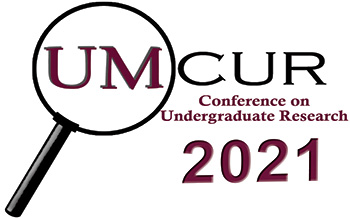Project Type
Presentation
Faculty Mentor’s Full Name
Hayley Blackburn
Faculty Mentor’s Department
Skaggs School of Pharmacy
Abstract / Artist's Statement
Nearly 20% of college students are food insecure, compared to 14.5% of the general population who face food insecurity. Factors that influence this include rising tuition costs, lack of affordable housing in college towns, and an increase in first-generation and/or low-income students. Moreover, food insecurity has a notable effect on physical and mental health and overall academic performance. College years are an important intervention time for nutritional practices as students are making sovereign choices and assuming responsibility for their health decisions that will ultimately shape their lifestyles. We conducted focus groups with UM college students to gauge their dietary habits and nutritional barriers.
Focus group participants were acquired through an optional survey distributed throughout the University of Montana campus, in numerous locations such as the dining hall, the residence halls, and emails from multiple different colleges at UM. In order to acquire demographics of participants, all who completed the survey answered questions regarding their residency status at UM, if they had experience using resources designed for people facing food insecurity, as well as basic nutritional literacy questions. They attended focus groups held via videoconference, where they were questioned about their level of knowledge regarding campus and Missoula community-specific resources. Additionally, we gathered data regarding the barriers preventing students from obtaining an adequate amount of nutritious food, and making healthy choices. Using this information, we will create an all-in-one online guide for students to reference with resources pertaining to nutrition and food insecurity to be distributed to UM students as they leave the residence halls, at Curry Health Center, in their class syllabi, and the global education building for international students studying here. Simultaneously, we will craft a toolkit that walks through our process step-by-step that is meant to be easily reproducible on any campus, anywhere.
Category
Franke Global Leadership Initiative
Nutrition Resources Workshop.pdf (98 kB)
Nutrition Resources PDF.pdf (206 kB)
Nutritional Access and Resource Knowledge in College
Nearly 20% of college students are food insecure, compared to 14.5% of the general population who face food insecurity. Factors that influence this include rising tuition costs, lack of affordable housing in college towns, and an increase in first-generation and/or low-income students. Moreover, food insecurity has a notable effect on physical and mental health and overall academic performance. College years are an important intervention time for nutritional practices as students are making sovereign choices and assuming responsibility for their health decisions that will ultimately shape their lifestyles. We conducted focus groups with UM college students to gauge their dietary habits and nutritional barriers.
Focus group participants were acquired through an optional survey distributed throughout the University of Montana campus, in numerous locations such as the dining hall, the residence halls, and emails from multiple different colleges at UM. In order to acquire demographics of participants, all who completed the survey answered questions regarding their residency status at UM, if they had experience using resources designed for people facing food insecurity, as well as basic nutritional literacy questions. They attended focus groups held via videoconference, where they were questioned about their level of knowledge regarding campus and Missoula community-specific resources. Additionally, we gathered data regarding the barriers preventing students from obtaining an adequate amount of nutritious food, and making healthy choices. Using this information, we will create an all-in-one online guide for students to reference with resources pertaining to nutrition and food insecurity to be distributed to UM students as they leave the residence halls, at Curry Health Center, in their class syllabi, and the global education building for international students studying here. Simultaneously, we will craft a toolkit that walks through our process step-by-step that is meant to be easily reproducible on any campus, anywhere.
